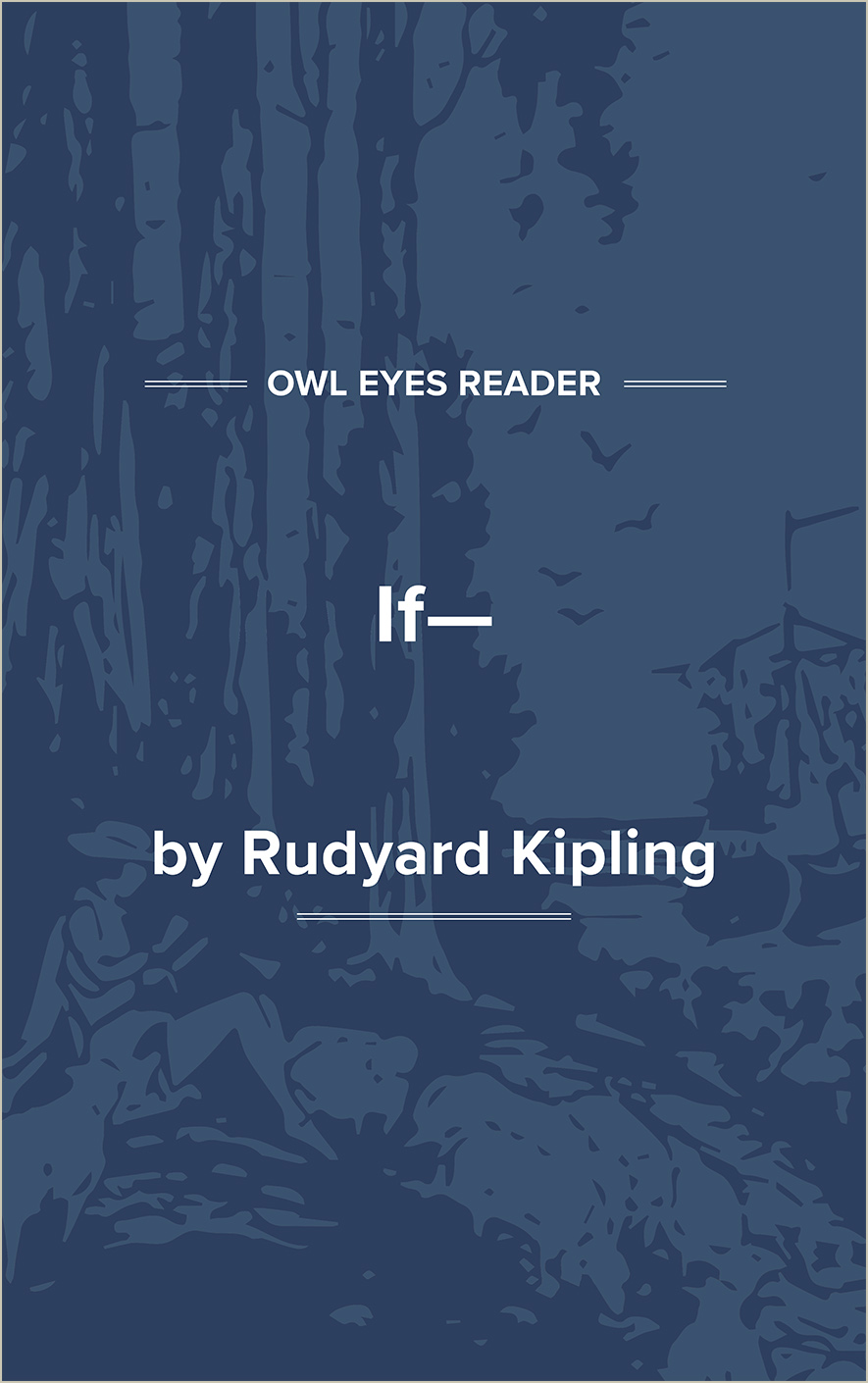Rudyard Kipling Biography
Joseph Rudyard Kipling was born in Bombay (now Mumbai), India, on December 30, 1865. His father, John Lockwood Kipling of Yorkshire, England, was a scholar and an artist. The elder Kipling went to India as a professor of architectural sculpture in the Bombay School of Fine Arts and later became curator of the Lahore Museum, which Kipling was to describe meticulously in Kim. He also served as the Bombay correspondent of The Pioneer of Allahabad. In 1891, he published Beast and Man in India with the help of A. P. Watt, his son’s literary agent. The book contains excerpts from Rudyard Kipling’s newspaper reports to the Civil and Military Gazette. The book provided inspiration for Kipling’s Jungle Book stories and several others: “The Mark of the Beast,” “The Finances of the Gods,” and “Moti Guj, Mutineer” are some examples.
Kipling’s mother, Alice Macdonald, was one of five Macdonald sisters, three of whom married into prominent families. Georgina Macdonald married the distinguished Pre-Raphaelite painter Sir Edward Burne-Jones; Agnes Macdonald married another painter, Sir Edward Poynter, who was influential in helping John Kipling obtain a position in India; and a third sister married Alfred Baldwin, the railroad owner, whose son Stanley Baldwin became prime minister of England. Kipling was therefore connected with creative and intellectually stimulating families through his mother, while from his father he inherited a strong Wesleyan tradition.
Rudyard and his sister, Trix, spent the first six years of their lives in India. Surrounded by Indian servants who told them Indian folktales, Kipling absorbed the Indian vocabulary and unconsciously cultivated the habit of thinking in that vocabulary, as illustrated in his short story “Tod’s Amendment.” Kipling recalls these early years in his posthumously published autobiography, Something of Myself, noting how he and his sister had to be reminded constantly to speak English to their parents and that he spoke English “haltingly translated out of the vernacular idiom that one thought and dreamed in.” This contributed to the great facility with which he uses Indian words as part of his writing style. Edmund Wilson, in his essay “The Kipling That Nobody Read,” writes that Kipling even looked like an Indian as a young boy.
Like other Anglo-Indian children who were sent home to England for their education, Kipling and his sister were shipped to London to live with a relative of their father in Southsea. The pain and agony of those six years under the supervision of this sadistic woman in what Kipling calls “the house of desolation” is unflinchingly re-created in the early part of The Light That Failed and in the short story “Baa, Baa, Black Sheep.” According to Wilson, the traumatic experiences of those six years filled Kipling with hatred for the rest of his life.
Kipling studied at the United Services College, a public school for children from families with a military background or with the government civil service. Kipling served as editor of the school newspaper, the United Services College Chronicle, to which he contributed several youthful parodies of poets Robert Browning and Algernon Charles Swinburne. One poem, “Ave Imperatrix,” however, with its note of patriotism and references to England’s destiny to civilize the world, foreshadowed Kipling’s later imperial themes. Although Kipling makes fun of flag-waving in “The Flag of Their Country” (in Stalky and Co., 1899), he did imbibe some of his imperial tendencies at the school, as there was an almost universal desire among the boys to join either the army or the civil service for the glory of the Empire.
In 1882, when Kipling was sixteen, he returned to India, and his “English years fell away” and never “came back in full strength.” Through his father’s connections, Kipling had no difficulty in becoming assistant editor on the Civil and Military Gazette of Lahore at the age of...
(The entire page is 1,272 words.)
Owl Eyes subscribers get unlimited access to our expert annotations, analyses, and study guides on your favorite texts. Master the classics for less than $5/month!

